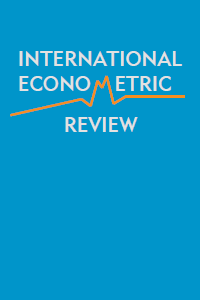Smooth Threshold Autoregressive models and Markov process: An application to the Lebanese GDP growth rate
Smooth Threshold Autoregressive models and Markov process: An application to the Lebanese GDP growth rate
This paper analyzes the evolution of the Lebanese GDP growth rate over the period 1970-2018 by estimating two kinds of switching models: The Smooth Transition Autoregressive (STAR) model and the model of the Markov process. These models show, on the one hand, asymmetries in the evolution of GDP growth with an abrupt transition from a regime to another and, on the other hand, a high probability that the economy remains in the recession regime. Even though the duration of the expansion phase is longer than the duration of the recession phase, the Lebanese economy experiencing the greatest difficulties in moving from a recession regime to an expansion regime. In addition, such an evolution is explosive and volatile during the lower regime (recession phase) but stationary and damped in the upper regime (expansion phase). Finally, the paper shows that the STAR model, taking a logistic form, better fits the Lebanese GDP growth than the Markov model.
Keywords:
GDP growth rate, Business cycle Markovian Model,
___
- Chang K.S; Tong H. (1986). “On estimating thresholds in autoregressive models”, Journal of Time Series Analysis, 7, 179-190.
- Dias F.C. (2003). Nonlinearities over the business cycle: An application of the Smooth Transition Autoregressive Model to characterize GDP dynamic for Euro-Area and Portugal, Working Paper, No 9-03, Banco de Portugal, Economic Research Department.
- Escribano A; Jorda, O. (2001). “Testing nonlinearity: Decision rules for selecting between logistic and exponential STAR models”, Spanish Economic Review, Vol. 3, Issue, 3, 193-209.
- Fathi E. (2009). « Décrire le cycle économique en Tunisie », Economie et Prévision, No 189, 3, 75-92.
- Ferrara L. (2008). L’apport de indicateurs de retournement cyclique à l’analyse conjoncturelle, Bulletin de la Banque de France, No 171.
- Ferrara L. (2009). « Caractérisation et datation des cycles économiques en zone euro », Revue Economique, Vol 60, No 3, 703-712.
- Granger C.W.J ; Terasvirta, T. (1993). Modelling Non-Linear Economic Relationships, Oxford University Press.
- Hamilton J.D. (1989). “A New Approach to the Economic Analysis of Nonstationary Time Series and the Business Cycle”, Econometrica, 57, 357-384.
- Hoffmaister A.W; Roldôs J.E. (2001). “The Source of Macroeconomics Fluctuations in Developing Countries: Brazil and Korea”, Journal of Macroeconomics, 23, Spring, 213-239.
- Luukkonen R.; Saikkonen P; Teräsvirta T. (1988). “Testing linearity in univariate time series models”, Scandinavian Journal of Statistics, 15, 161–175.
- Luukkonen R.; Teräsvirta T. (1991). “Testing linearity of economic time series against cyclical asymmetry”. Annales d'Economie et de Statistique, 10/21, 125–142.
- Ndonga O ; Francis Y. (2007). Les sources des fluctuations macroéconomiques au Cameroun, MPRA, Munich Personal RePc Archive, Paper No 1308, Research on line: http ://mpra.ub.uni-muenchen.de/1308/
- Terasvirta T. (1994). “Specification, Estimation and Evaluation of Smooth Transition Autoregressive Models”, Journal of the American Statistical Association, 89, pp. 208-218.
- Tong H. (1983). Threshold Model in Non-Linear Time Series Analysis, New-York, Springer-Verlag.
- United Nations, Statistic Division, National Account Main Aggregates Database, (2020), http://unstats.un.org/unsd/snaama/dnlList.asp
- Van Dijk, D; Teräsvirta, T; Franses, P.H. (2002). “Smooth transition autoregressive models – a survey of recent developments, Econometric Reviews, Taylor and Francis Journal, 21(1), 1-47.
- Verne J-F. (2011). “An econometric analysis of the output gap fluctuations: The case of Lebanon”, Economics Bulletin, Vol. 31, Issue 2, 1530-1547.
- ISSN: 1308-8793
- Başlangıç: 2009
- Yayıncı: Ekonometrik Araştırmalar Derneği
